In just one pot and about 30 minutes, you can have a flavorful ramen with onion, garlic, and fresh ginger at home! I make this easy gochujang chicken ramen for lunch frequently, though it also makes a great dinner. This recipe makes two hearty bowls and is easily doubled or tripled for more servings.
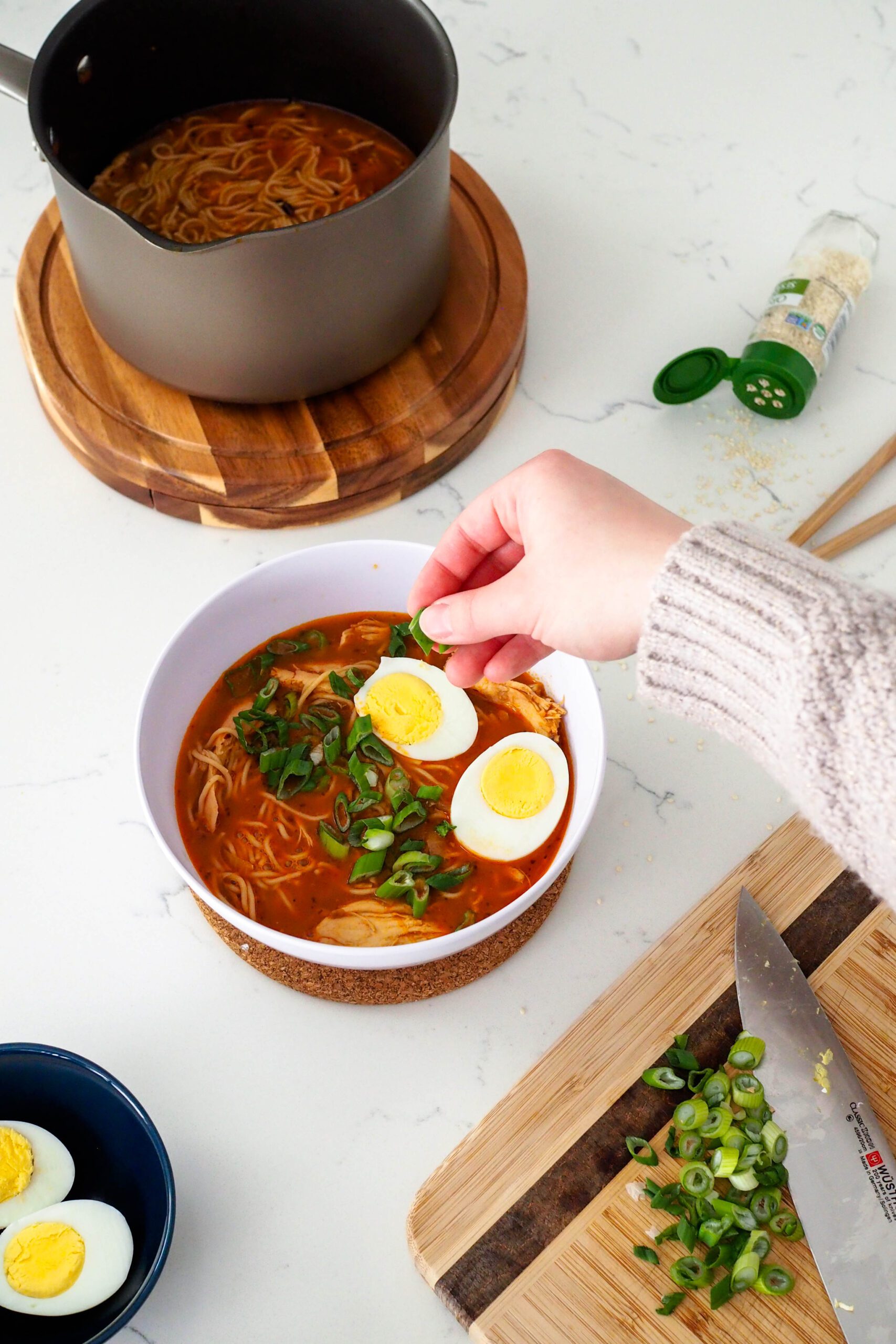
Ingredients for Easy Gochujang Chicken Ramen
All of the ingredients for gochujang ramen are fairly straightforward, but you may need to stop at a local Asian grocery for a few items. As a bonus, no one ingredient is very expensive. This meal ends up being pretty budget-friendly (and easily gluten-free with a few substitutions).
- Butter or bacon fat. I don’t regularly have bacon fat on hand, but when I do, I use it in this recipe. Butter (unsalted or salted) also works!
- Hot chili oil (optional). This adds a little extra heat.
- Yellow onion. Yellow or white onion works best to caramelize in this recipe. Red is a little too strong.
- Garlic. Garlic adds a ton of flavor. Use as much or as little as you like.
- Fresh ginger (optional). Fresh grated ginger helps brighten the broth considerably.
- Gochujang. The star of this ramen! Gochujang is a sweet, spicy, and savory paste made from rice, chilies, and fermented soybeans.
- Soy sauce. This will help give the broth extra umami.
- Chicken broth. Use your favorite kind of chicken broth: low-sodium, from a bouillon cube, from a can—whatever you have on hand!
- Rotisserie chicken. The shredded chicken adds lots of protein and a variety in texture.
- Ramen noodles. Fresh or dried ramen noodles work well.
- Green onion and sesame seeds. Mostly for garnish, but they add freshness and some texture!
- Hard-cooked or ramen eggs. An extra egg ups the protein in this dish to about 40 grams. Use marinated ramen eggs for the best flavor.
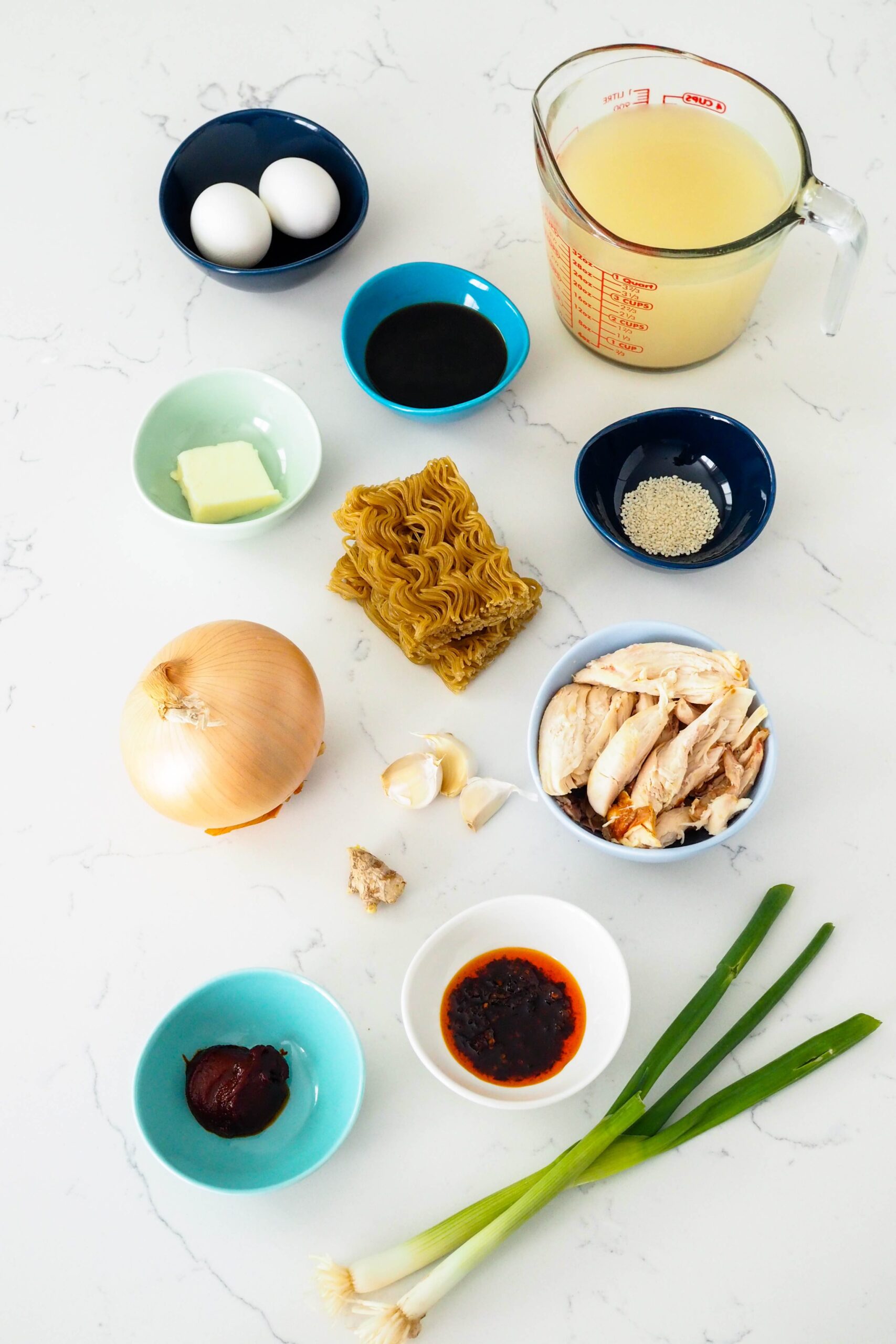
Quick Tips for Prepping Easy Gochujang Chicken Ramen
As the title for this recipe states, this gochujang chicken ramen is easy to make. However, I always like to include photos and tips in more detail in the blog post just in case you’re newer to the kitchen.
Don’t worry; all of the necessary information needed to make this recipe is in the recipe card itself!
Cutting the Vegetables for Ramen
The first step in this recipe is preparing your vegetables. I like to slice everything in order with my chef’s knife and place them in separate piles on my cutting board.
To cut the onion into half moon slices, chop off both ends of the onion. Then place the onion, cut side down, on the cutting board. Slice it in half and set one half aside. Place the other half cut side down, then slice the onion parallel to the cut ends. I like to cut mine about ¼” (6 mm) thick.
To prepare fresh ginger, break off a piece about the size of your thumb. Then use a spoon to scrape the peel off. Grate the peeled thumb of ginger with a Microplane for best results.
Caramelizing the Onion
Caramelizing the onion is likely the hardest part of this recipe. I have burned the onion many times trying to get it right, but that’s only made it easier for me to tell you when the onion is getting overcooked.
Start with sufficiently warmed fat (butter, bacon fat, hot chili oil, or a combination) over medium heat, then add your onions. Stir the onions until they have softened and lost some of their water, about five minutes.
At this point, turn down the heat to medium low (or even low!) and cook for another 5-10 minutes, stirring frequently. Low and slow is the name of the game here. If you do not reduce the heat, your onions have a high chance of burning.
Continue stirring the onions until they are mostly transparent and have very little shape to them. When you stir caramelized onions around, they should offer no resistance and mold to the shape of the spatula. There may be small blisters on the surface of the onion as well.
If your onions start to burn, they will burn quickly. The burned flavor overpowers everything else and will not be improved if you add the remaining ingredients, so you’ll need to start over.
The onions on the right have burned. If your onions have burned, throw them out and start over. The burned flavor will not go away in the broth.
Adding the Gochujang
After the garlic and ginger have cooked for one minute, add in the gochujang and soy sauce.
Stir the mixture together well, then let it cook for one minute. It will be thick and sticky. Letting the mixture cook allows us to boil off some of the water content, which will concentrate the flavors.
Adding the Ramen Noodles
Some ramen recipes call for boiling the ramen noodles in a separate pot and then adding the noodles to the finished broth. I personally like the additional starches in the broth. If you like your broth thinner, I would recommend cooking the noodles in advance.
Depending on the kind of ramen noodles you have, it can take anywhere from 30 seconds to 3 minutes to cook your ramen noodles.
Fresh ramen noodles (found at your local Asian market) cook very quickly, sometimes in under a minute; dried ramen noodles usually take around 3 minutes to cook.
Please follow the package instructions to ensure you don’t under- or overcook your ramen noodles.
Serving the Gochujang Ramen
I use tongs to split the noodles and chicken between two large soup bowls first. Then, I pour the broth over the noodles and chicken.
Add finishing touches with the boiled egg halves, sesame seeds, and green onions.
Serve immediately, as ramen noodles are very thin and can overcook easily.
Can I Make this Gochujang Ramen Gluten-free?
Sure, with a few easy modifications!
Gochujang is made from rice, but some brands of gochujang include wheat in the ingredients. You’ll need to verify that your gochujang is free of gluten. My favorite gluten-free gochujang is from Trader Joe’s, but there are other ones available online.
Then, substitute gluten-free ramen noodles and coconut aminos for regular ramen noodles and soy sauce. You’re all set for gluten-free gochujang ramen!
How Spicy Is this Gochujang Ramen?
Great question! This ramen is of medium heat as written, with two Tablespoons of hot gochujang and one Tablespoon of hot chili oil.
For milder spice (but still tons of flavor), use only one to two Tablespoons of mild gochujang and omit the hot chili oil.
To make this ramen extra spicy, add a teaspoon of crushed red pepper flakes to the caramelized onion at the same time you add the garlic and ginger!
Other Recipes You May Enjoy
I have a number of other easy, savory recipes that you may want to try for your next dinner! Here are some of my favorites:
- The predecessor to this recipe (and one of the first recipes I published), my easy chicken ramen is a favorite!
- For when you’re feeling a meal with southwestern flair: one-pot chicken and brown rice.
- For easy personalization, use my thin crust pizza dough recipe and top with your favorite pizza toppings!
Dish Cleanup: A Lil Messy
I rate my recipe cleanups on a scale of 1 to 5. 1 is only a handful of dishes, and 5 is everything including the kitchen sink.
My gochujang chicken ramen recipe has a cleanup rating of a 3. There’s one large pot, a handful of bowls to hold your ingredients, a knife and cutting board, and a few other kitchen staples. Most of what I used is dishwasher-safe, so the dishes didn’t set me back for too long. For the heartiness of this meal and the stunning combination of flavors, every dish is worth it.

Easy Gochujang Chicken Ramen Recipe
Easy Gochujang Chicken Ramen
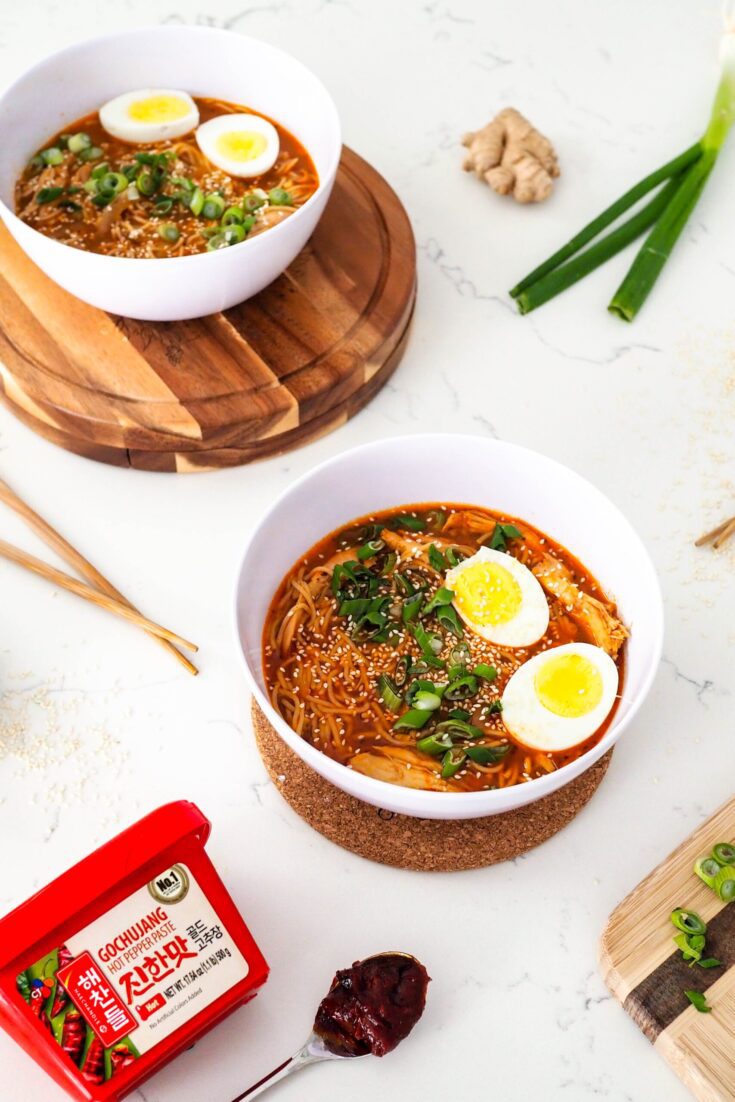
This easy and inexpensive gochujang chicken ramen recipe comes together in one pot. It's full of flavor with onion, garlic, ginger, and a little bit of heat from the gochujang, and it makes for a delicious chicken ramen you'll be craving for months!
Ingredients
- 1 Tablespoon butter or bacon fat (15 ml)
- 1 Tablespoon hot chili oil (15 ml) (optional)
- ½ medium yellow onion
- 2-4 cloves garlic
- Thumb of fresh ginger (optional)
- 1-2 Tablespoons gochujang*
- 3 Tablespoons soy sauce (45 ml)
- 32 oz chicken broth (950 ml)
- 1 cup shredded rotisserie chicken (220g)
- 2 bundles dried ramen noodles
- 2 stalks green onion, for garnish
- Sesame seeds, for garnish
- 2 hard-cooked or ramen eggs, cut in half
Instructions
- Prepare all your vegetables: Cut the half of the onion into half-moon slices about ¼" (6mm) thick. Mince the garlic. Peel the ginger (a spoon works well!), then grate it. Slice the green onions on a diagonal for a decorative finish. Set everything aside in small bowls or in piles on the cutting board.
- Heat butter or bacon fat and hot chili oil in a medium pot over medium heat.
- Once the butter melts, add in the onion and sauté, stirring occasionally, until the onions start to caramelize. Be careful: Onions have a tendency to burn on medium-high heat, especially if they aren't stirred often! Once the onions have wilted and lost some of their moisture (about 5 minutes in), reduce the heat to medium-low. Continue cooking the onion, stirring occasionally, until they have caramelized, another 5-10 minutes.
- Stir in the garlic and ginger, and cook for one minute until fragrant.
- Stir in the gochujang and soy sauce, and cook for one minute to boil off some water. The mixture will be thick and syrupy.
- Add the chicken broth and shredded rotisserie chicken, then let the broth come to a boil.
- Add the ramen noodles into the broth and cook according to package directions (usually about 3 minutes).
- Divide the ramen into two bowls and top with green onion slices, sesame seeds, and hard-cooked eggs. Serve immediately.
Notes
*Gochujang's spiciness varies drastically depending on the brand. Trader Joe's is fairly mild; CJ Haechandle's is quite a bit spicier. If you haven't made anything with gochujang before and are wary of too much spice in your food, I'd recommend using only two teaspoons to start before tasting the broth and adding more if necessary.
Recommended Products
As an Amazon Associate and member of other affiliate programs, I earn from qualifying purchases.
Nutrition Information:
Yield:
2Serving Size:
1Amount Per Serving: Calories: 800Total Fat: 40gSaturated Fat: 12gTrans Fat: .5gUnsaturated Fat: 18gCholesterol: 385mgSodium: 2900mgCarbohydrates: 51gFiber: 4gSugar: 12gProtein: 40g
The nutrition facts are estimated and may vary based on specific ingredients used.
Thanks for trying out my easy gochujang chicken ramen recipe! Please consider rating this recipe so others find it, too.
I’d love to see how your recipe turns out: Take a photo and tag me on Instagram @floralapronblog to share with me, or use the hashtag #floralapronbakes.
This post contains affiliate links. If you click through and make a purchase, I may receive a small commission at no cost to you. Thank you for helping to support The Floral Apron!

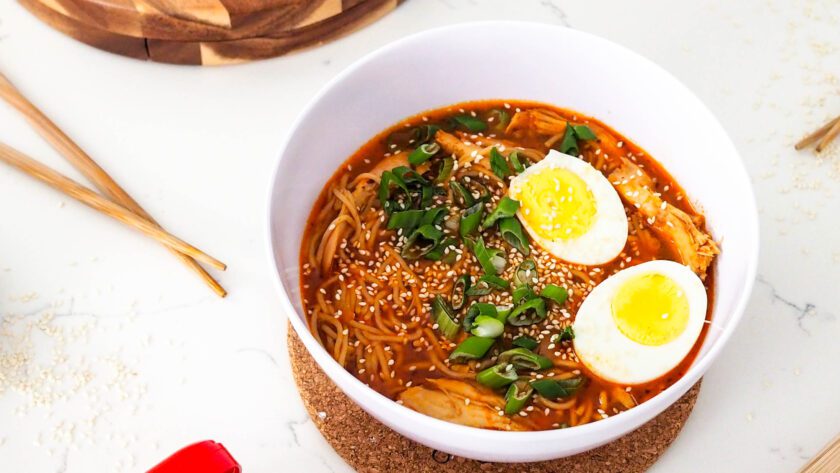
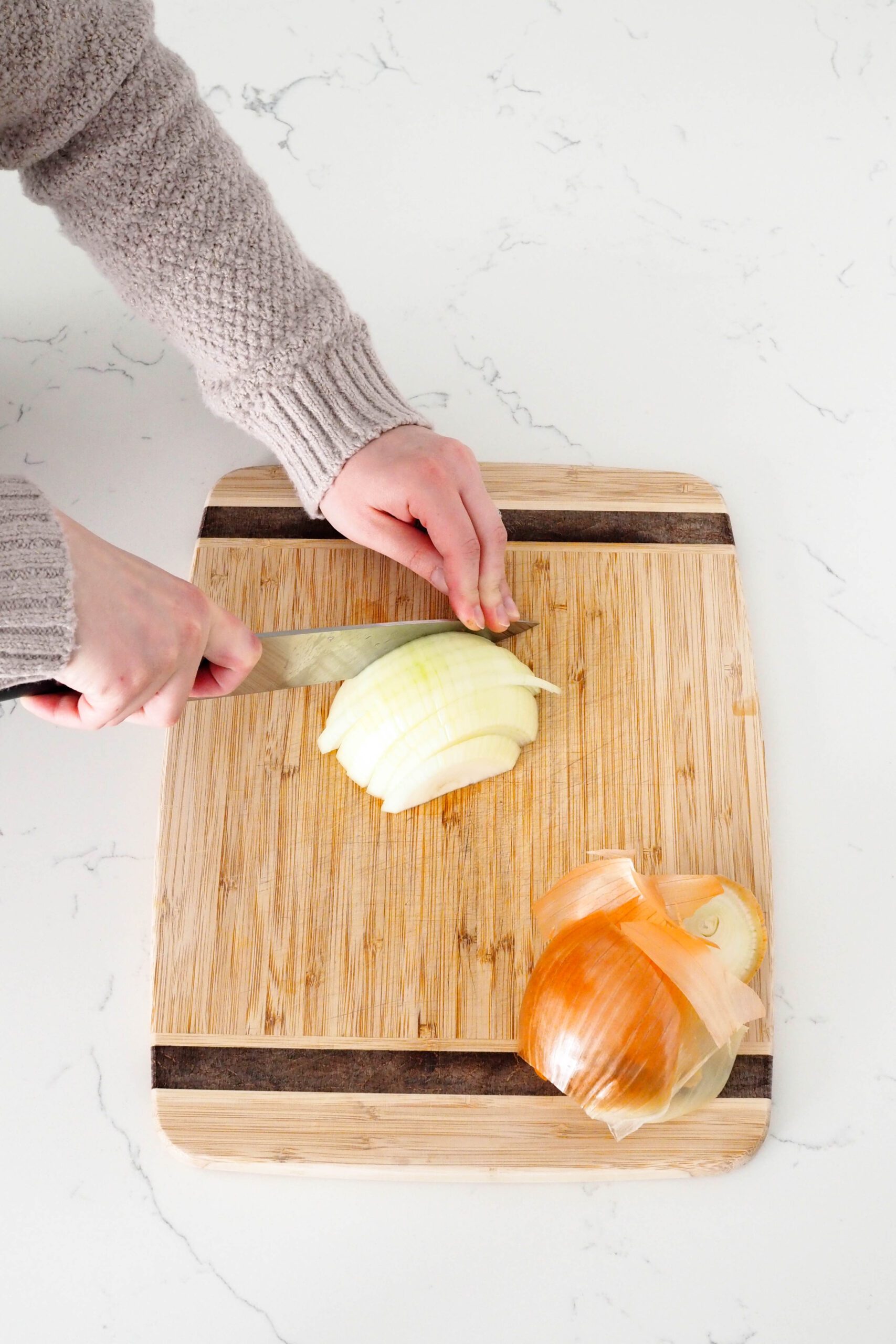

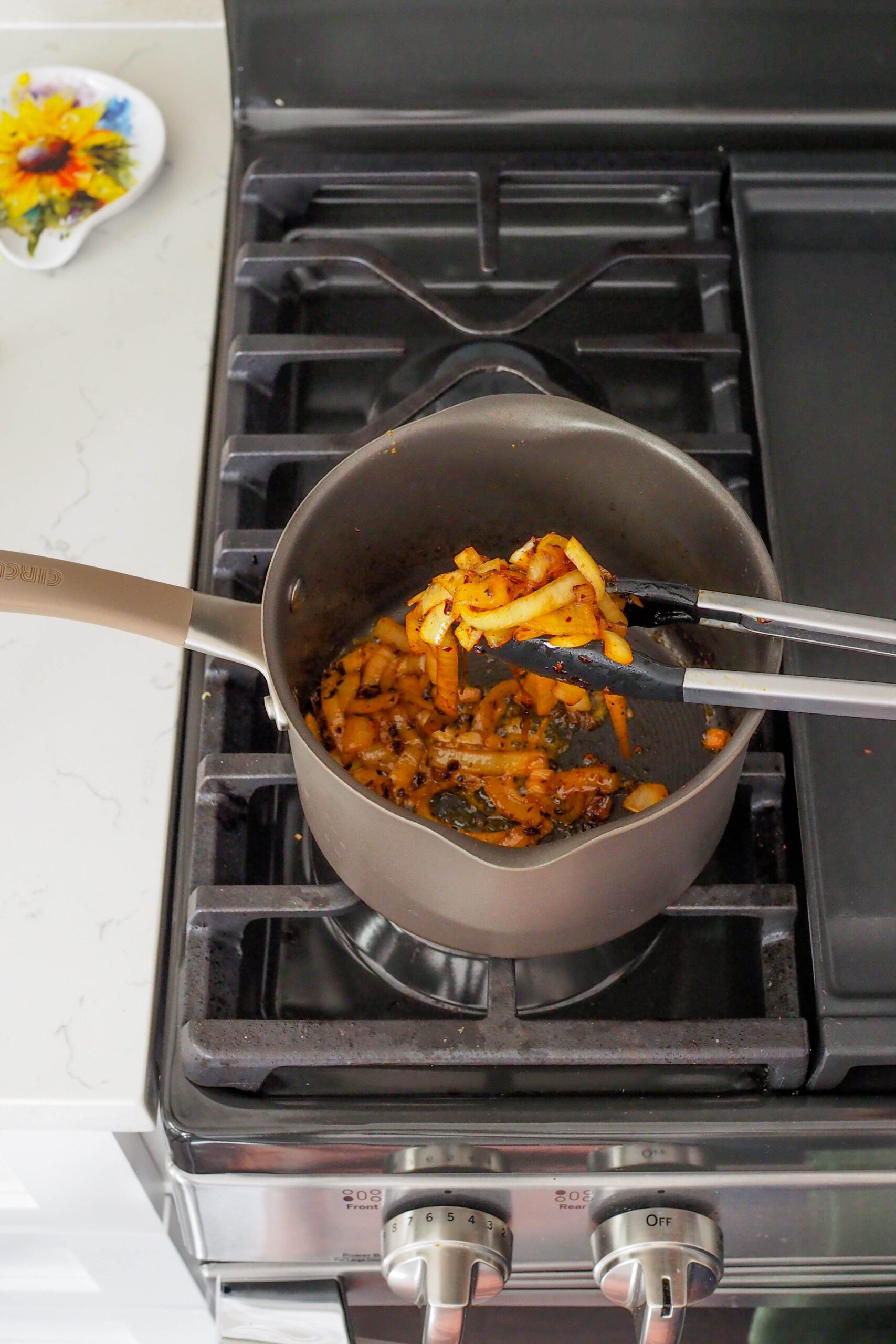
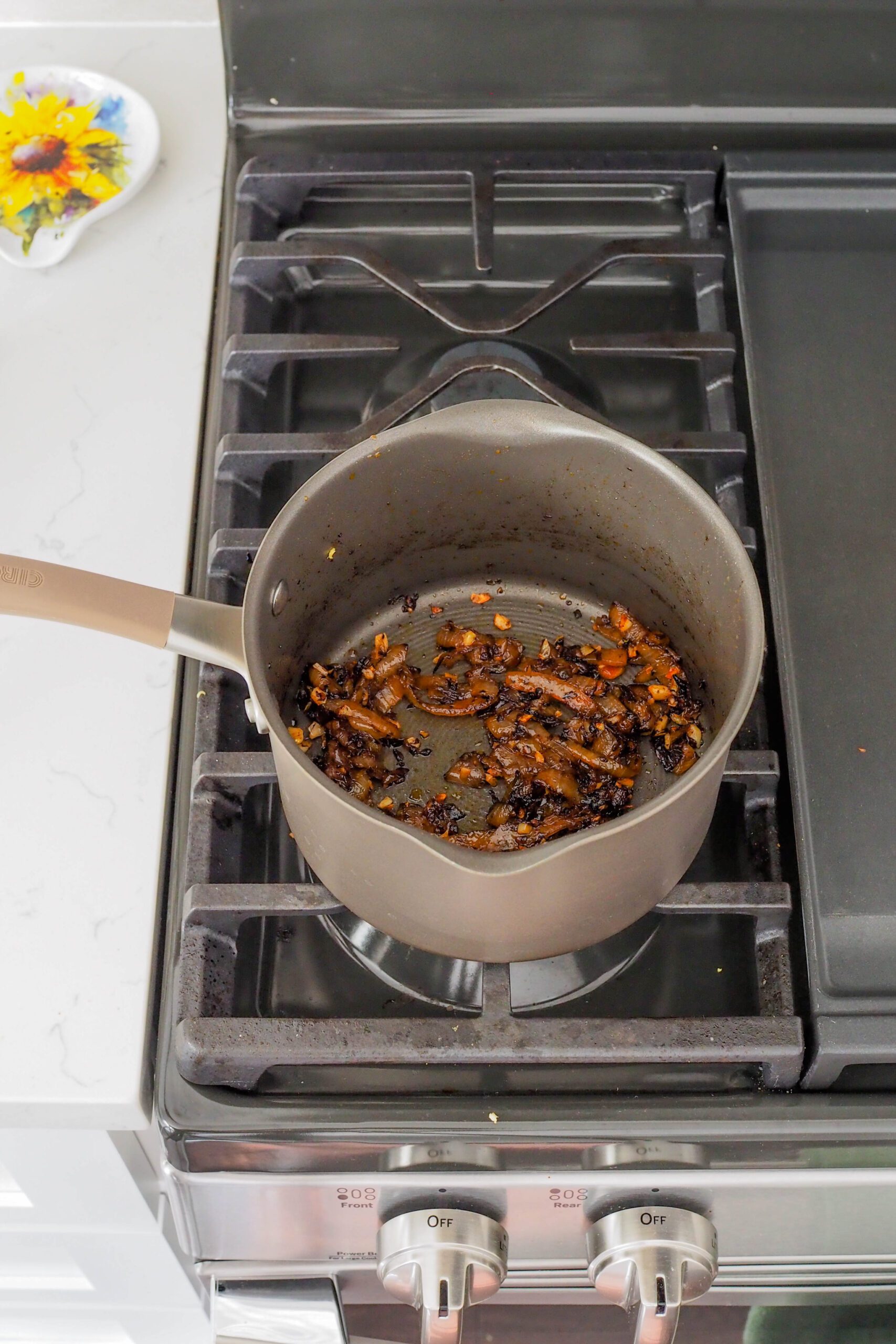
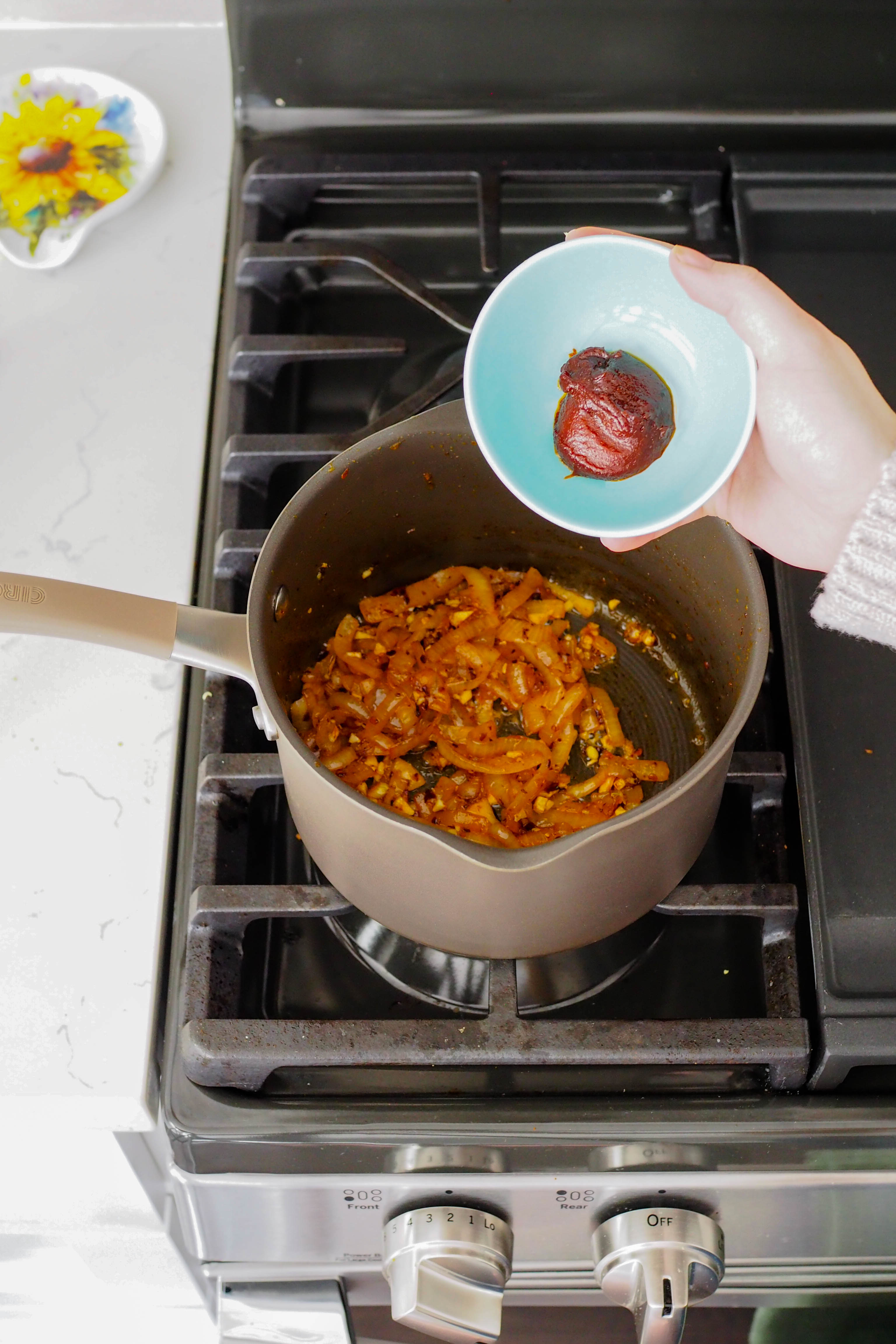

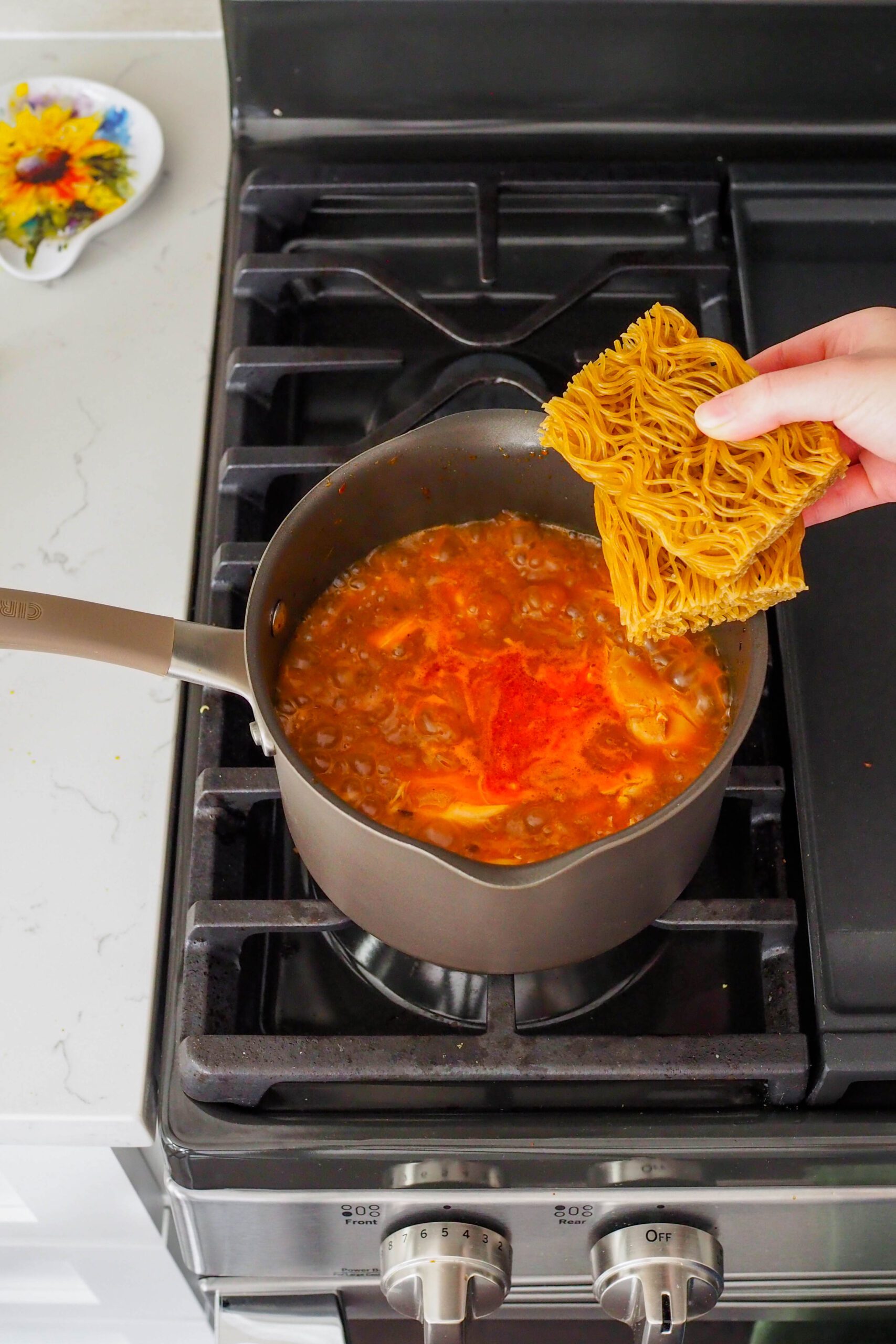
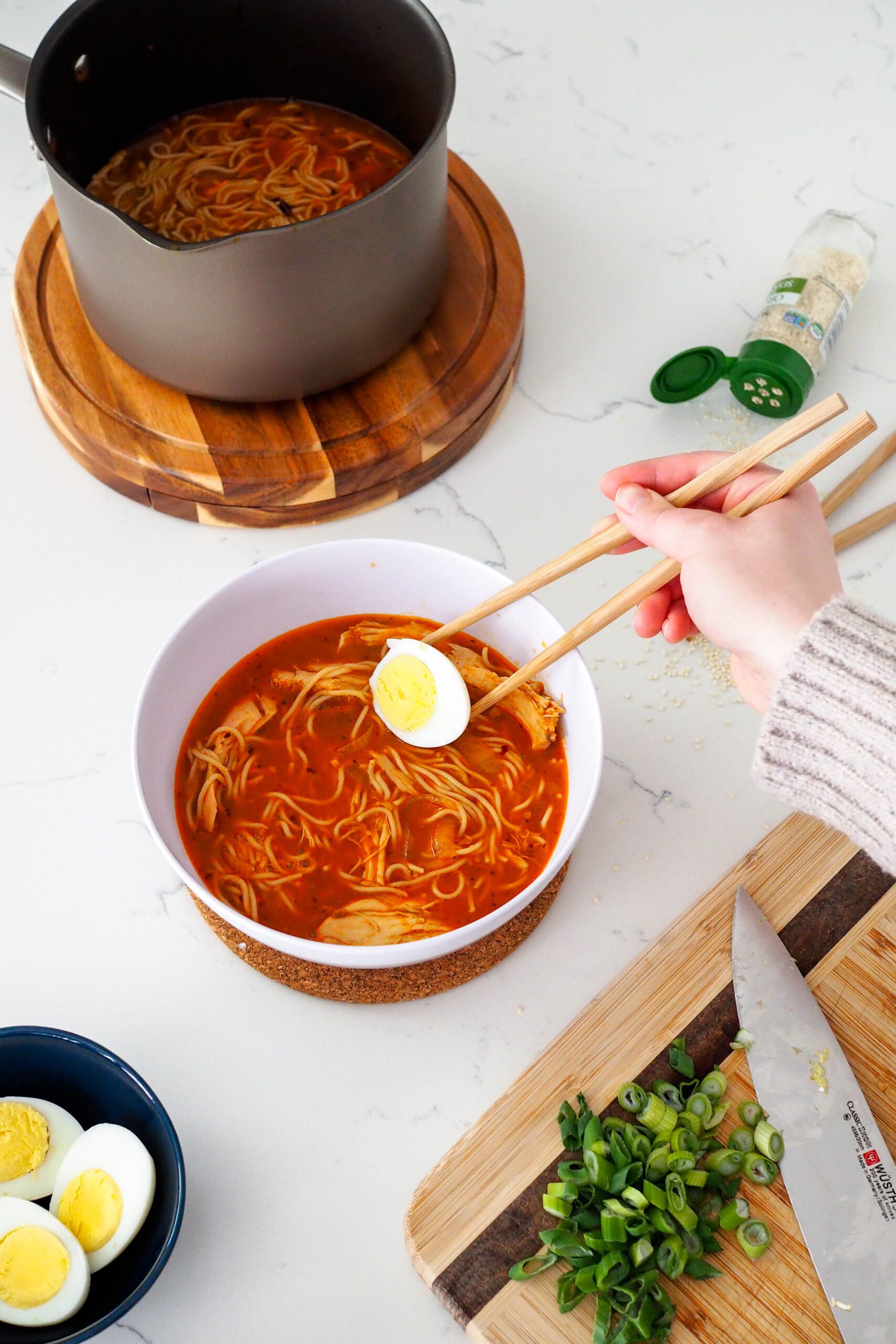



Delicious! I’ve made this plenty of times, so I added sauteed mushrooms and a few slices of bacon tonight to switch things up—very good! 🙂
That sounds delicious! Thanks for leaving a review!
I made this tonight with some leftover pulled pork in lieu of chicken. It was great!
So glad to hear that! Thanks for leaving a comment! 🙂